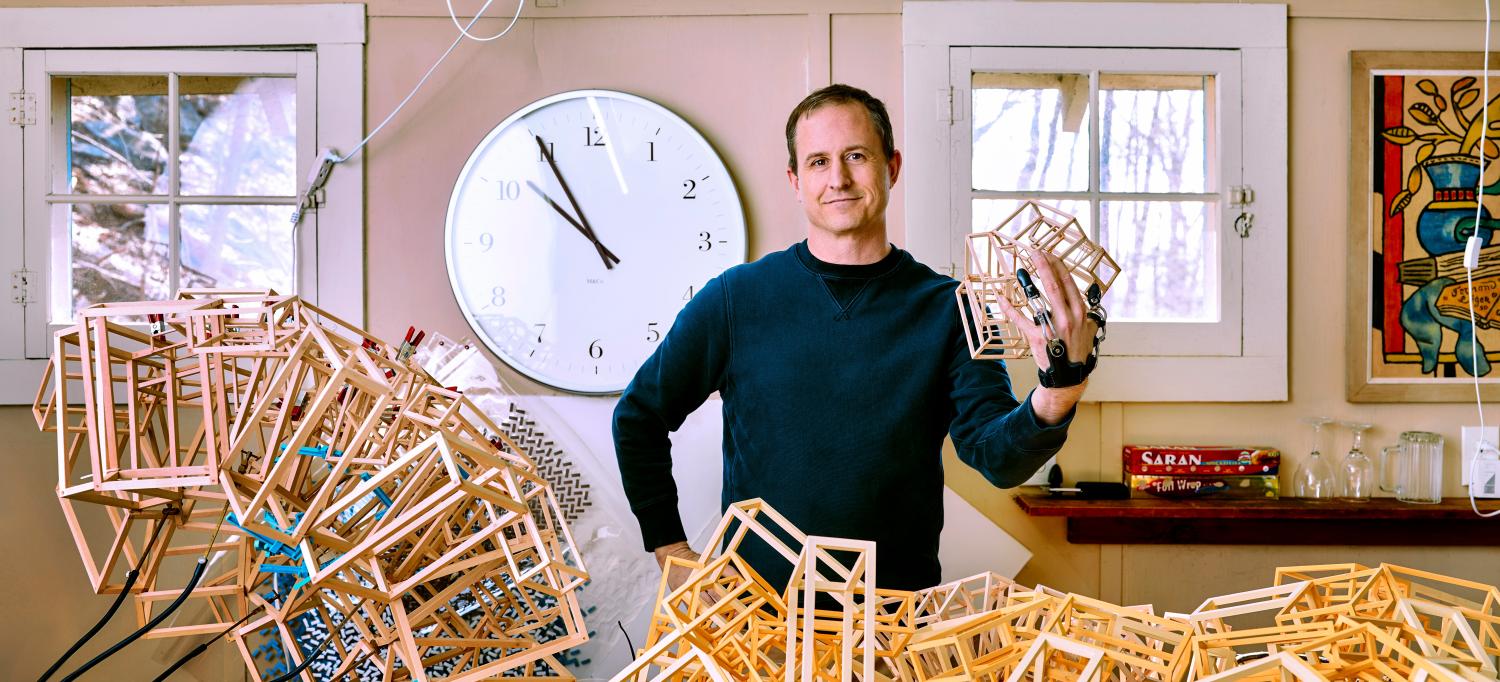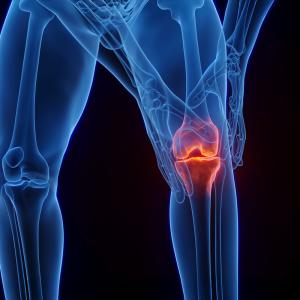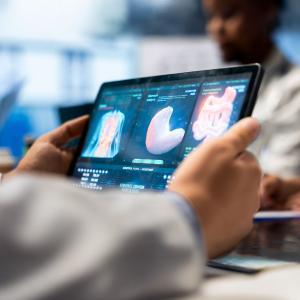
John Powers at his home in Putnam Valley, New York, nearly three years after the accident that changed his life. Rather than being limited by his misfortune, John Powers has embraced it—even using his retooled hand as inspiration for artwork.
Credit: Brad Trent
On the afternoon of May 19, 2021, John Powers was using a table saw to make ornamental caps for fence posts outside his home in Putnam Valley, New York. The artist, now 52, is known for his large wood and steel multimedia installations. “I work with my hands—this is how I think,” he says.
While notching a large block of wood, the saw suddenly kicked back and dragged his hand through the blade. The block hit him squarely in the nose, stunning him. Then, to his horror, he noticed that the blood spilling onto his boots and the ground was coming from his nondominant left hand. The saw had severed his thumb and ring finger and badly damaged his index and middle fingers.
Powers was rushed to a nearby trauma center, where surgeons were unable to save his ring finger. They tried to reattach his thumb, but it didn’t “take.” As he was recovering, a question kept nagging him: how much of himself, and his ability to create art, had he lost permanently?
Determined to find out, he made an appointment to see Jacques H. Hacquebord, MD, associate professor of orthopedic surgery and co-director of NYU Langone Health’s Center for Amputation Reconstruction. Powers was impressed immediately. “Dr. Hacquebord was looking three steps ahead, and I really liked that,” Powers says. “It gave me a sense that there was a complete plan for me.”
Since its launch in 2019, the center has been a driving force in helping patients regain the use of amputated limbs and digits through surgical techniques and rapidly evolving technology. Some cutting-edge prosthetics the team uses, known as myoelectric or bionic devices, have sensors that can detect the firing of adjacent muscles in the residual limb. “So when the patient thinks, ‘Bend my index finger,’ the prosthetic finger will bend like a real one,” says Omri B. Ayalon, MD, clinical assistant professor of orthopedic surgery and the center’s co-director.
Last fall, NYU Langone hosted the inaugural Bionic Reconstruction Conference, a first-of-its-kind event focused on surgical and prosthetic innovations in the care of upper limb amputees; more than 200 medical, surgical, and technical experts from the United States and around the world attended. Dr. Hacquebord and Dr. Ayalon also helped pioneer a surgical advance, called osseointegration, that connects a patient’s remaining bone at the site of a lower extremity amputation to a prosthetic device by means of an innovative titanium implant.
Dr. Hacquebord emphasizes that for patients who have lost a limb, compassionate, multidisciplinary care is essential to improve their outcomes. Beyond surgical solutions, he connects patients with prosthetists and physical therapists, among other specialists. “The center is about treating patients in a holistic way that maximizes their function and helps them to flourish in life,” says Dr. Hacquebord.
Some patients with thumb amputations opt for a toe-to-thumb transfer, a procedure that can help them regain sensation and intuitive motion. Powers, though, chose not to sacrifice another digit and was instead drawn to a stainless steel and silicone device designed to maximize motor dexterity and grip capability.
On June 11, 2021, Dr. Hacquebord, chief of hand surgery, performed reconstructive microsurgery, removing Powers’ failed thumb reattachment and restoring nerves in his index finger. A month later, Dr. Hacquebord removed damaged bone and repaired nerves and tendons in Powers’ now-healed middle finger. With those procedures completed, he referred Powers to a hand therapist to optimize the connection between his hand and the prosthetic, which attaches to his wrist and replaces his two missing fingers.
“Even though it doesn’t look like a hand, it moves like a hand, and I’m far more comfortable when I wear it than when I don’t,” Powers says. He and Dr. Hacquebord have joked that his device looks like something straight out of The Terminator.
As part of the meaningful process of “bringing back my hand,” as Powers describes it, he can now turn a doorknob and eat with nearly normal hand movements. He has resumed drawing and smaller-scale artwork, though he hasn’t yet returned to his larger projects. Powers and Dr. Hacquebord continue to explore possibilities that might further enhance his fine-motor skills.
“There are parts of this journey that have felt miraculous,” says Powers. “Dr. Hacquebord has been my Virgil, my guide, and I’m grateful for that.”

